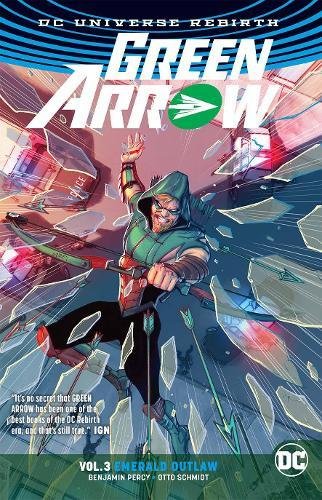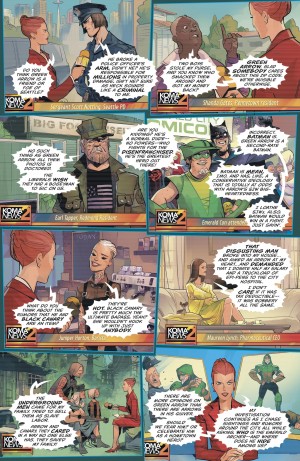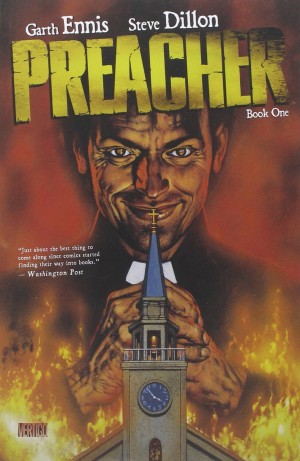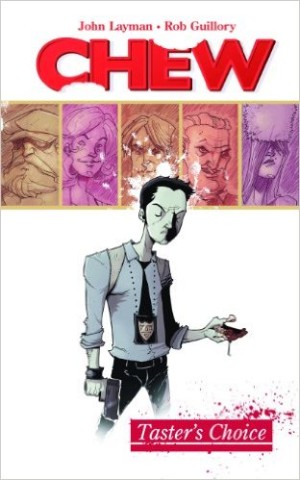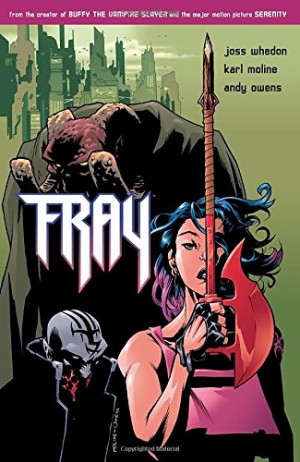Review by Ian Keogh
In terms of story alone, Emerald Outlaw is the best of Benjamin Percy’s run on Green Arrow to date and finally suggests he has a long term agenda for the character. The plot puts social injustice back at the centre of Green Arrow, as Percy pulls a number of issues from the contemporary news headlines. He extrapolates the divided USA that exists in reality by having Green Arrow framed for a series of murders and attempted murders, those with wealth and power well able to finance such activities to remove a thorn from their side. Within this Percy incorporates several fine moments. Green Arrow’s comment about seeing broken reflections of himself is a very nice touch, as is mention of the Japanese method of repair.
A frustration of the Rebirth version of Green Arrow is a lack of consistency about the art. Otto Schmidt appeared to have been settled on as the primary artist seeing as he began the series, so if a back-up was required, why couldn’t someone more suitable than Juan Ferreyra have been selected? Or is consistency not considered an editorial priority? This is no slight on Ferreyra’s art. Had he begun the series and Schmidt been the back up the questions would remain valid. The most obvious difference is the is the alternating colour scheme. Schmidt works a definite dark mood, while at times Ferreyra’s scenery is so vivid it might as well be Disneyland, but their styles are incompatible in other respects, and sometimes they don’t appear to be drawing the same character. Ferreyra’s version of Green Arrow looks older. We also have the trio of Eleanora Carlini, Gus Vasquez, Carlos Rodriguez on a single chapter.
If there’s a problem with Emerald Outlaw it’s that Percy’s built up an ensemble series, but it’s still titled Green Arrow, and this story doesn’t leave much room for anyone else. Black Canary has a few action moments but there seem equally as many when her purpose is a confidence-bolstering hug. John Diggle is pretty well missing in action until a surprise revelation, and there’s barely room for Henry Fyfe either as the villains occupy the supporting cast roles. It’s more than a minor quibble, but not one that detracts overall from a taut thriller whose seemingly opposite plotlines fuse very nicely, and which offers plenty of shocks along the way. It offers hope for The Rise of Star City.
